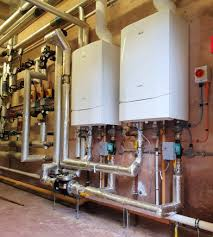
Commercial Heating Systems
Many businesses are unable to replace their entire commercial heating system due to budgetary or time constraints. It may be that there are plans for a heat pump solution to be introduced in the future or the building’s use will change significantly over time. In the interim, a low-risk refurbishment may be the most cost-effective way to increase compliance and efficiency.
There are some steps you should follow when you’re renovating or repairing a plant room:
Assess
Consider your existing system. This will determine how much work is required and what products you need. For more information on Boiler Repair Cheltenham, visit HPR Services Ltd
Open vented plant rooms are quite common in older buildings. This can have some disadvantages, such as the risk of pollution and a lack of pressure. It also limits your options for the future. You will have to decide whether you want to keep the open system and work around it or replace it with an enclosed system.
You will be able to save space and time in the future if you have a sealed heating system. Sealed heating systems are closed systems that don’t have an expansion or feed tank. They use a pressure unit instead to replenish lost water and maintain minimum head levels. A expansion vessel is also required to control the effects of heating fluid expanding and contracting.
Your Needs
The size of a hot-water system or heating system is determined less by the size of a property than it is by the projected peak demand. Consider how the building will be used in the near and long term. You may find that your building’s use has changed and that demand has increased, or you can resize any equipment to save energy and reduce waste. You may have enough capacity in the boiler to install a water heater, which is more efficient and easier to install.
is available here.
Take a look at your existing flue
Your flue could influence the direction of your refurbishment. The Energy Related Products Directive has eliminated the majority of high efficiency, non-condensing heating systems up to 400kW. You may be required to switch from an atmospheric boiler into a condensing heater. You may also need to replace the flue, or line the flue with a condensate-proof material.
Boiler
The boiler will often be at the core of your heating system, and is likely to be a major component of any refurbishment. You will also need to take into account the type of fuel and the task that the boiler is required to perform. Also, you will need to take into account the space and time available for your project.
